Altan T. Metal Forming Handbook
Подождите немного. Документ загружается.

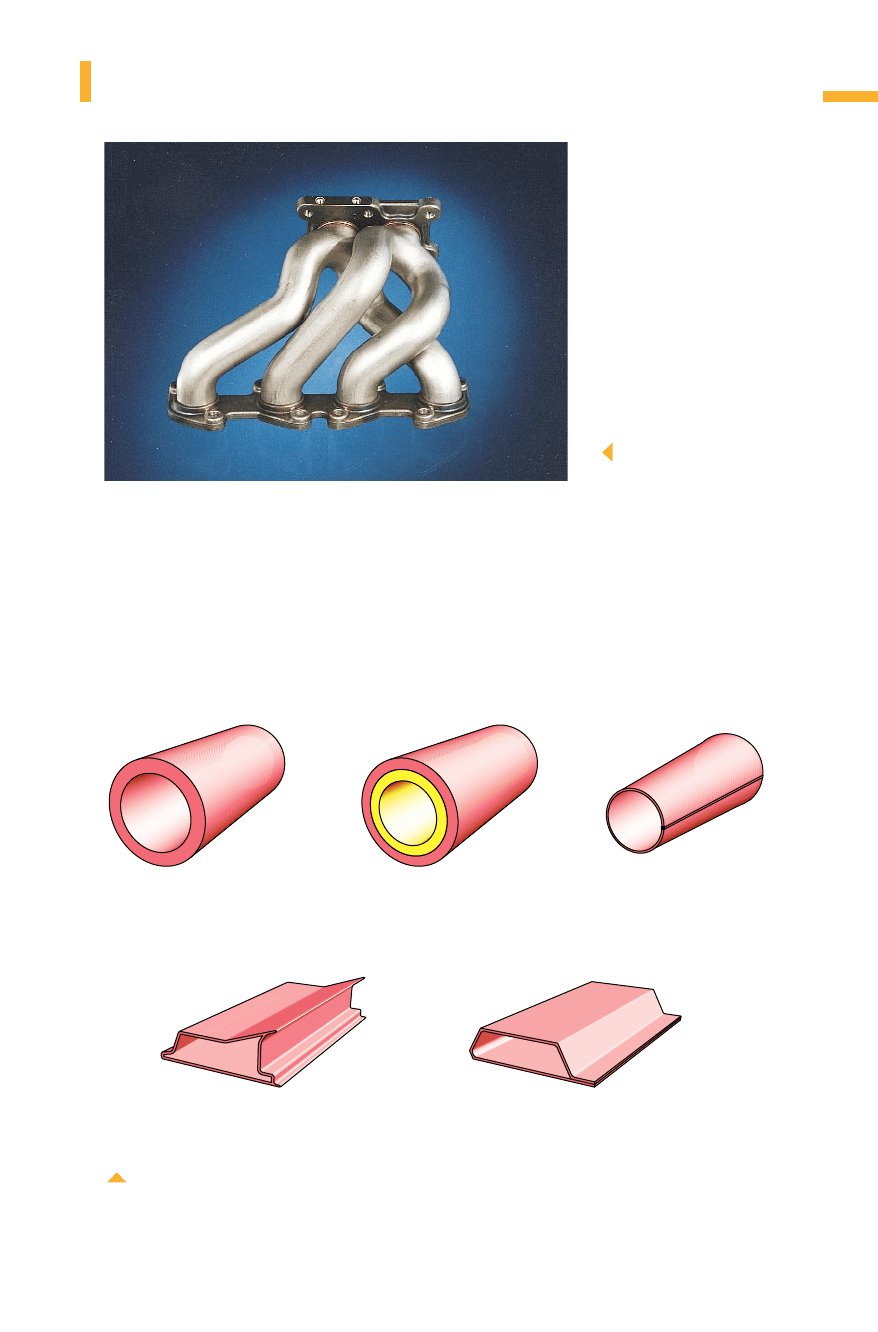
411
Process technology and example applications
Fig. 5.2.7
Pure calibration
Fig. 5.2.8 Blank shapes
single-walled tubes
extruded sections welded or unwelded
sheet metal blanks
double-walled tubes sheet metal blanks
conically rolled
and welded
Metal Forming Handbook / Schuler (c) Springer-Verlag Berlin Heidelberg 1998
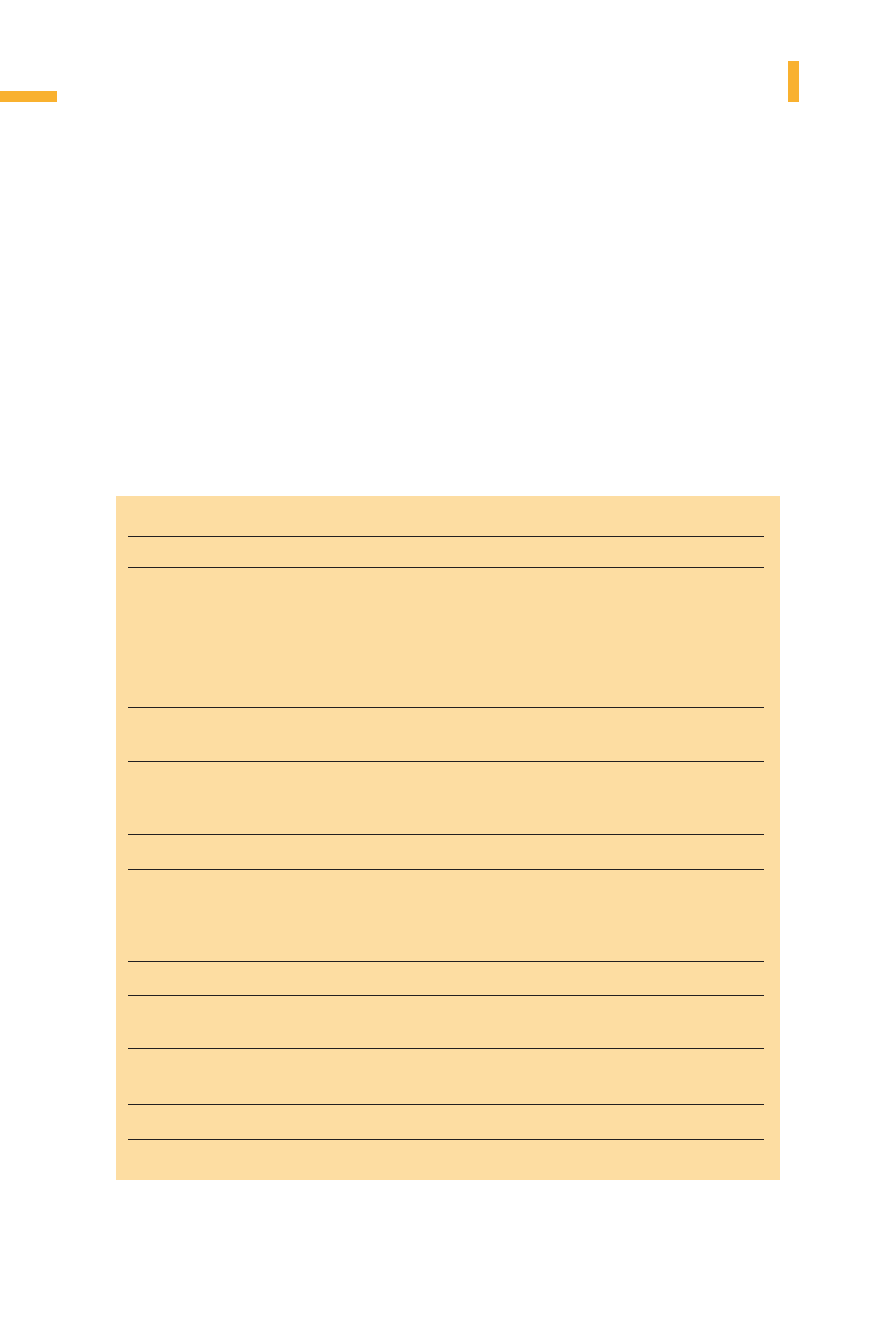
On the basis of the various semi-finished product shapes (Fig. 5.2.8),
hydroforming can be applied to a wide variety of fields. Three main
user groups have emerged as the most significant over recent years
(Table 5.2.1):
–the automotive engineering and supply industry,
–sanitary and domestic installation industry,
–pipe and pipe component manufacturers.
412
Hydroforming
Sector
automotive industry
vehicles
– road
– water
– air
– rail
chemical, gas, oil industry,
power station construction
domestic appliance industry
bicycle industry
processing of sections
pumps and fittings
heating, ventilation,
air conditioning
furniture industry
lighting industry
optics
Assembly
chassis, exhaust and intake
systems, add-on parts,
drive system, seats,
frames/bodywork,
steering
piping and tank components,
pipe fittings
fittings, machines
pipe fittings
frame construction, semi-
finished pipes, rail-bound
vehicles, utility vehicles
housings
fittings
frames, moulded elements
street lighting
telescopes, torches
Component (examples)
cross members, side members,
manifolds, roof rails, spoilers,
gear shafts, seat frame com-
ponents, A/B/C pillars,
roof frame profiles, steering
column with compensation
T-fittings, reducers,
housings, panelling
tube bends, T-fittings,
reducers, cross pieces,
bends
pedal bearings, joints, frames
joints, girders,
calibrated tubes, sections,
roof arches, frames,
structural members
intake pipes
tube bends, reducers,
T-fittings, manifolds
legs, structural members,
joints, shells, shelves
light masts, lamp shells
housings
Table 5.2.1: Fields of application for the hydroforming technique
Metal Forming Handbook / Schuler (c) Springer-Verlag Berlin Heidelberg 1998

5 Hydroforming
5.3 Component development
5.3.1 User-oriented project management
In practical industrial application, it is increasingly important to design
a component not only for functionality but also for producibility.
“Simultaneous engineering” and “early involvement” have become
important watchwords in the field of product design, with customer
and process developer cooperating from an early stage in determining
component configuration. Only in this way is it possible to optimize
functional and process engineering related factors within a short time-
frame. A component development activity can be, for example, carried
out as follows:
1. preliminary meeting (customer and developer)
2. technical and economic feasibility study (customer and developer)
3. component configuration suitable for hydroforming (customer and
developer) and definition of a production sequence
4. prototype development: CAD surface data generation (customer) and
CNC milling data generation (developer), manufacture of a forming
die and production of prototypes using different materials and wall
thicknesses (developer)
5. try-out of prototypes (customer)
6. definition of quality-relevant (QA) data (customer)
7. series production (customer or supplier)
Metal Forming Handbook / Schuler (c) Springer-Verlag Berlin Heidelberg 1998

5.3.2 Feasibility studies
When developing hydroformed components, the precise analysis of
boundary conditions is essential. Optimum design of components tak-
ing into consideration special process-specific factors enhances safety
and also the cost-effectiveness of series production.
The feasibility study, the component configuration and definition of
a production sequence are closely interlinked. Once these processes
have produced a positive result, it is possible to start with prototype
development of the components. When working through the individ-
ual steps, different boundary conditions must be taken into account.
These are briefly outlined below.
Review of feasibility
When reviewing feasibility, a difference is drawn between two groups of
components: new developments with a geometry that has been config-
ured specifically with hydroforming in mind, and the production of
existing components using hydroform technology.
Significant factors here include the geometry, wall thicknesses, mate-
rials and procurement of the semi-finished parts or preforms. Initially,
the geometry data is evaluated with the aid of a CAD/CAM system.
Circumferences, radii, cross sections and transitions are all determined.
A decision must also be taken regarding the characteristics of the pre-
form. In the case of a tube, for instance, these factors would include the
material to be used, the diameter, the wall thickness and also any pos-
sible need for pre-forming.
The expected circumferential expansion is then determined. Taking
into account the material data, the wall thickness, pre-forming of the
tubular blank and other boundary conditions, it is possible to assess the
manufacturing feasibility. Subsequently, the internal pressure, closing
force, forces and movements of the horizontal cylinders have to be cal-
culated. Since the correlations between all the different influencing
variables are highly complex, specific expertise is an essential compo-
nent of successful part configuration.
Part configuration
If it is possible to manufacture the part, the next stage is to design the
details, the position in the die and the slide channels. In the case, when
414
Hydroforming
Metal Forming Handbook / Schuler (c) Springer-Verlag Berlin Heidelberg 1998

a component does not appear to be producible using hydroforming
technology, an attempt is made to modify the existing conditions in
such a way that the part can be produced without modifying its func-
tional characteristics.
The part geometry must be optimized taking into account the process
limits. Where assemblies are produced, it may under certain circum-
stances be possible to group several parts into a single one or to split the
assemblies up differently. A different material can also be selected. When
making this type of modification, the question of reliability in series pro-
duction must not be neglected, as this is of decisive importance concern-
ing the cost effectiveness and process engineering related issues.
Configuration for series production
This stage includes the definition of a production sequence and config-
uration of the necessary production lines. Consistent implementation
of the prototyping results is of particular importance here. An optimum
product is only achieved through effective interaction of theoretical
analysis and practice-oriented testing. Another aspect is the definition
of quality-relevant QA data.
Forming simulation
The Finite Element Method (FEM) has become an established feature of
metal forming technology. The objective of FEM is to replace costly and
elaborate experimental testing by fast, low-cost computer simulation.
Any practical implementation of preliminary considerations must
take into account the special features of hydroforming:
– consideration of partial strain hardening on pre-formed tubes,
– correlation between process parameters: motions and forces of the
horizontal cylinders, variation of internal pressure in time, motion of
additional die components such as hole punches and counterpres-
sure punches, closing movement of the die,
– functional coordination of process parameters: internal pressure, dif-
ferent additional die elements such as hole punches and counter-
pressure punches and axial cylinders,
– springback,
– failure criteria: buckling and bursting,
– material behavior: anisotropy and flow curve and
– description of the contact (friction) conditions.
415
Component development
Metal Forming Handbook / Schuler (c) Springer-Verlag Berlin Heidelberg 1998
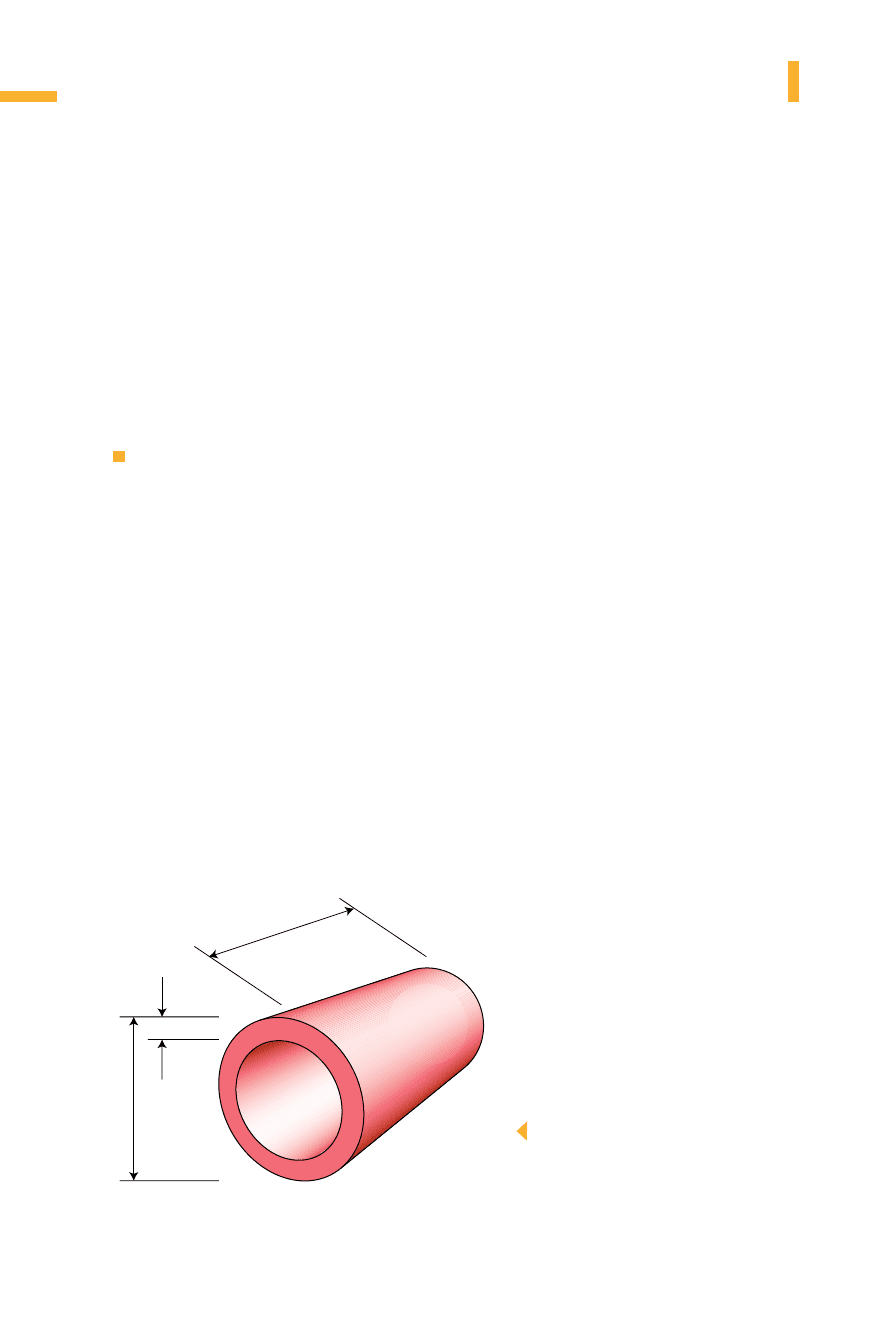
The following information can be computed using a suitably config-
ured FEM program:
–equivalent plastic strain,
–effective stress,
–thickness distribution,
–distribution of plastic strain rate,
–principal strains and
–distance between outer wall of workpiece and the die wall.
5.3.3Component design
In addition to the use of pre-bent tubes, the process technologies specif-
ic to hydroforming include the generation of cross-sectional changes,
flanges, breakthroughs, simple and multiple branches or the creation of
surfaces for centering welding operations. The key data indicated in
Fig. 5.3.1describes the current state of the art for using tubular-shaped
blanks. The maximum achievable height of a bulge at a straight leg is
markedly higher than one on a bend, as the material is prevented from
further displacement by the geometry of the bend (Fig. 5.3.2).A larger
branched tube height can be achieved if the branch is located near a
horizontal cylinder. In principle, sharp corners and edges should be
416
Hydroforming
part length L
max. 12,000 mm
wall thickness s
0.6 to 50 mm
diameter D
max. 660 mm
Fig. 5.3.1
Present state of the art in hydro-
forming using tubes as blanks
Metal Forming Handbook / Schuler (c) Springer-Verlag Berlin Heidelberg 1998
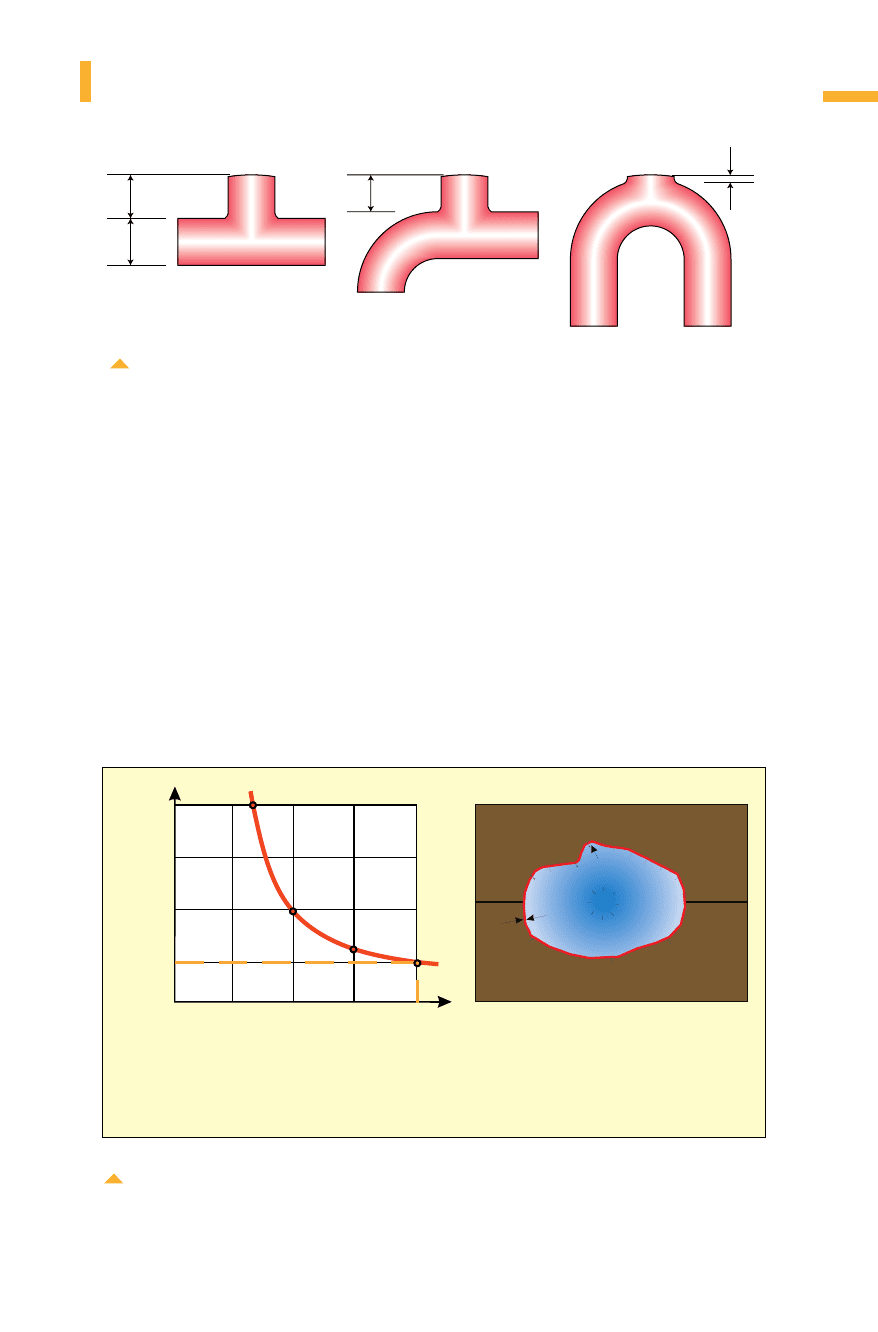
avoided when designing a component. Radii must be adjusted to the
wall thickness(Fig. 5.3.3).It is beneficial to provide gentle round tran-
sitions between different cross sections when this is allowable by the
functional requirements.
Some of the fundamental guidelines to be observed when designing
hydroformed components are outlined below.
417
Component development
Fig. 5.3.2 Examples of achievable branched tube heights: the achievable height decreases
with an increasing degree of difficulty
D
100% D
75% D
15% D
Fig. 5.3.3 Internal pressure as a function of the inside radius
inside radius/wall thickness[–]
internal
pressure
[bar]
5,000
3,000
1,000
1/1
3/1
2/1
4/1
pfrks
s
ifmax min
r
min
(,,)=
required internal pressure
hydroforming die
r
min
s
pi
=smallest inside radius
of the component
=wall thickness
=stability factor
k
f
Metal Forming Handbook / Schuler (c) Springer-Verlag Berlin Heidelberg 1998

Straight component axis
The inflation limit is restricted by the risk of bursting and buckling. The
likelihood of buckling increases with the length of the expanded sec-
tion. With a buckling length # 2 · the diameter of the tubular blank
(starting diameter), and if a rotationally symmetrical cross section is
being processed, the achievable deformation may be assumed to lie well
beyond the ultimate elongation of the material.
Axial curvature
In the case of components with a curved axis in the inflation contour,
axial displacement of material is possible without problems, provided
the curvature radius is R $ 5
·
the diameter of the initial preform. Partial
inflation takes place here at the inner shell of the bend.
The free buckling length should not exceed the starting diameter,
extend over no more than half the circumference of the tubular blank
and at the same time it should be continuously decreasing.
In free forming without support, the component buckles if axial pres-
sure is applied. The inflation capacity is limited by the ultimate elonga-
tion, as forming takes place purely as a result of the internal pressure.
Cross sections
During free expansion, the maximum deformation is reached when the
free buckling length amounts to a maximum of 2 · starting diameter, and
the cross section is rotationally symmetrical and located in the tube axis.
An asymmetrical cross section with a deep, narrow contour area can
only be formed in cases where material is able to flow axially into the
contour. Sharp contour transitions lead to partial and localized stretch-
ing in the wall and thus to premature bursting. Asymmetrical cross sec-
tions outside the tube axis can be formed in cases where at least half the
circumference of the tubular blank is supported by the die contour.
Longitudinal sections
Contour transitions are best designed with large radii. Suddenly chang-
ing transitions in the direction of material flow lead to the formation of
cross-wrinkles at the component (buckling) and act as a brake to mate-
rial flow in the axial direction. Beyond these underlying guidelines, the
following points should be observed in the configuration of hydro-
formed components:
418
Hydroforming
Metal Forming Handbook / Schuler (c) Springer-Verlag Berlin Heidelberg 1998

Pure expansion/compression
The optimum ratio between the pipe diameter D and pipe wall thickness s is
D/s = 20 … 45
Here too, the free buckling length should be # 2 · the starting diameter D.
If D/s > 45, there is a danger of bursting or buckling. This can be pre-
vented by reducing the free buckling length.
If D/s < 20, the buckling length can be greater with increasing wall
thickness. Thinning of the wall thickness is prevented by axial dis-
placement of the material. However, the same displacement can also
lead to compression of the wall. Only a minimal danger of buckling
exists.
Expansion/compression and local calibration
The maximum inflation capacity is limited by the ultimate elongation
of the material. Half the ultimate elongation represents the limit of
achievable deformation where no axial material flow is possible. In this
case, the buckling length is of no significance.
Pure calibration
The limit of achievable deformation corresponds to half of the ultimate
elongation of the material.
419
Component development
Metal Forming Handbook / Schuler (c) Springer-Verlag Berlin Heidelberg 1998
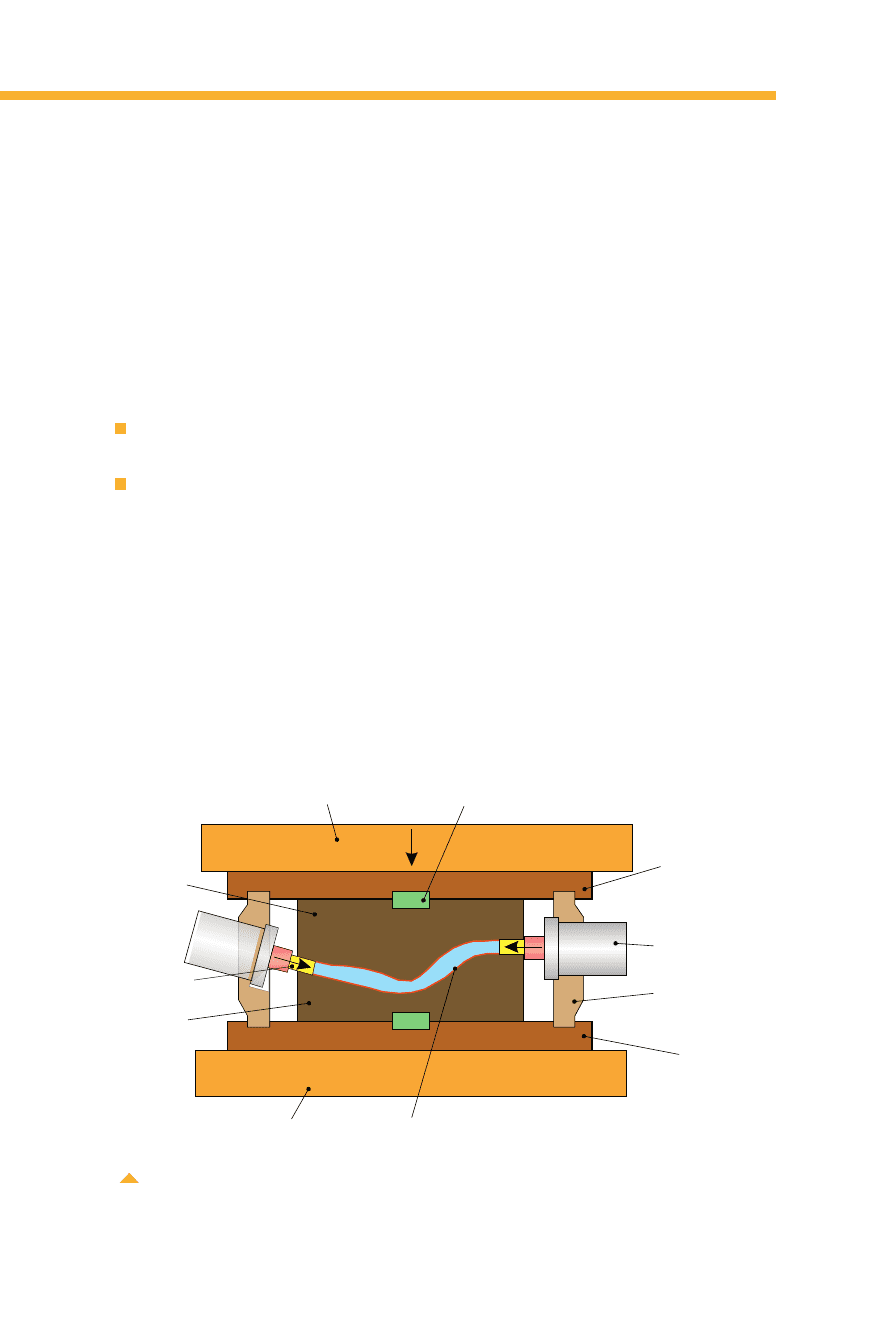
5Hydroforming
5.4Die engineering
5.4.1Die layout
Figure 5.4.1illustrates the layout of a hydroforming die. The die set
which comprises an upper and a lower die is used to accommodate the
functional elements. The die holder plates permit adjustment of the
assembly height prescribed by the press stroke or height of the cylinder
holder brackets. The seal punches which are actuated by the displace-
ment or pressure-dependent and controlled horizontal cylinders, they
seal and push the tube ends during the compression process. The piston
Fig. 5.4.1 Schematic view of a die layout
seal punch
slide plate
centering
die holder plate
horizontal cylinder
cylinder holder
bracket with
swivel mounting
die holder plate
hydroformed partbed plate
top die
bottom die
Metal Forming Handbook / Schuler (c) Springer-Verlag Berlin Heidelberg 1998
